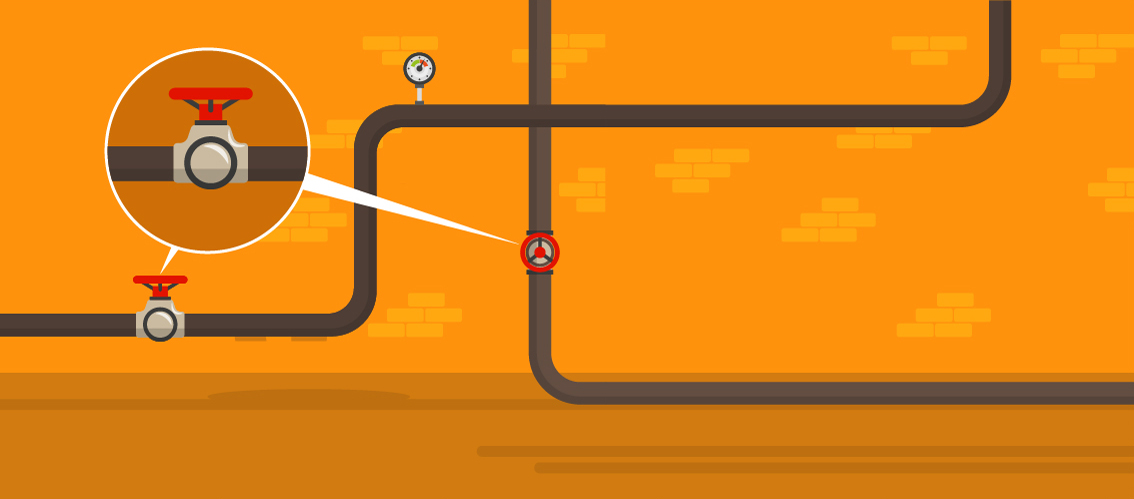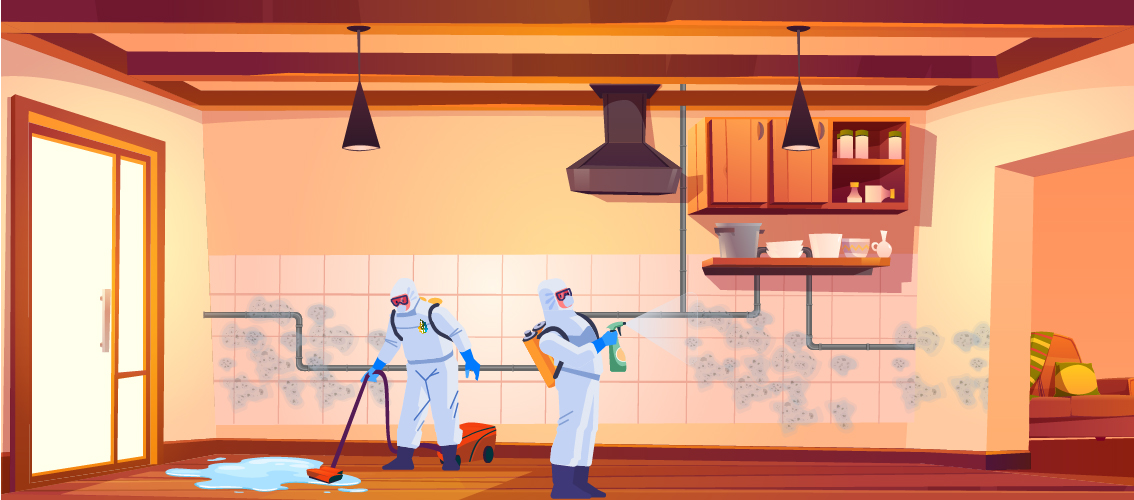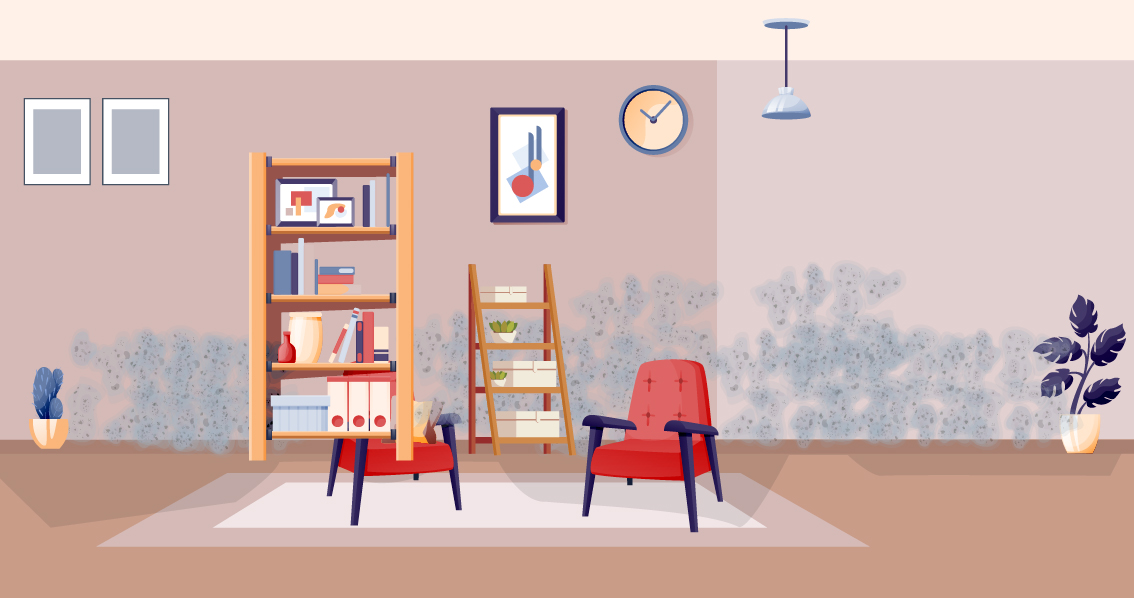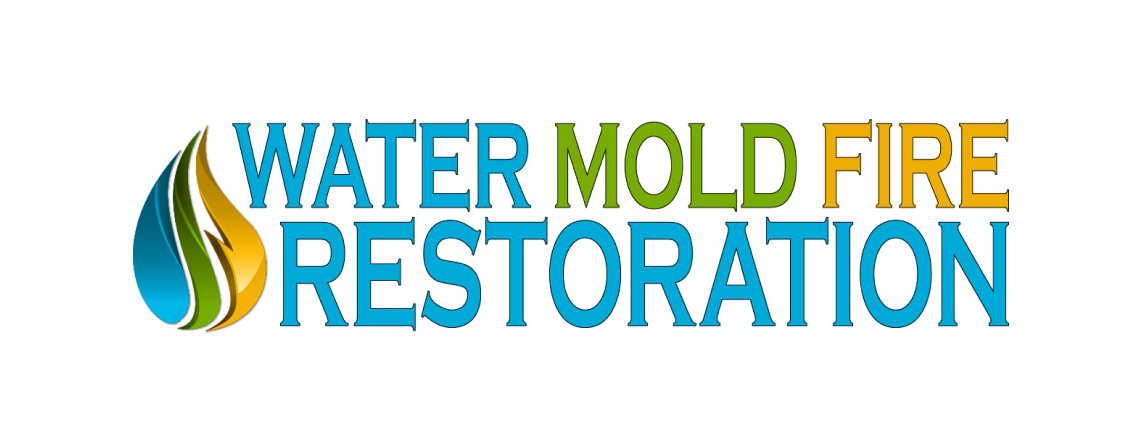

Water damage to the interior of a building, whether it be a home or business, can cause serious problems, and they will continue to escalate the longer materials, or personal possessions are allowed to remain wet. Wood warps, drywall crumbles, metal rusts, and carpet delaminates.
The longer these materials are allowed to remain wet, the more extensive the damage will be. In addition, mold and mildew will begin to grow, causing even more damage and posing serious health risks.
Having to deal with water intrusion at a property you own, manage or reside in will always be very stressful. Water Mold Fire Restoration is here to help ease that burden. We have found a big reason for the stress is that people are dealing with an unfamiliar situation. For that reason, WMF has put together this detailed guide to go over the water damage restoration process and answer some of the frequently asked questions that come our way.

You can define "mitigation" as "the action of reducing the severity, seriousness or painfulness of something."
This is the perfect word to explain what we do here at Water Mold Fire Restoration. We get on site to stop the bleeding and start the healing.
What is the source of the water? Has the source of water been stopped?
Knowing the answer to these two questions is very important. If you know what the water source is and know it has been stopped, then you are ready for our services. If not, there may be certain actions to take before we get there.


If water is still flowing and you are unsure where it is coming from, find your water main and shut it off. If the water stops after you do that, you know you have a plumbing issue. Below is a list of the most common plumbing issues that stop once you turn the water off.
Burst Pipes – Pipes can burst due to freezing, extreme heat, corrosion, shifting or high water pressure.
Pipe Leaks – Leaks are usually caused by age and corrosion.
Water Heater Burst and Leaking – There are many reasons a water heater may burst. The primary reason is too much pressure builds up for one reason or another. Age is also a big factor as corrosion can occur at various places, causing failure.
Appliance Issues – Fridges, dishwashers and washing machines all have water lines and can all potentially malfunction.
Toilet – broken supply lines, failed wax rings, and cracked toilet tanks.

Sewage backups and toilet overflows are two further plumbing issues that can happen. They will not be stopped by shutting off the water main/supply as it is water from the drainage side of the system building up and coming back into the property.
Sewage Backups – Pretty much the worst situation you can imagine. Either a clog down the line or a build-up from the city that causes a small or large amount of waste including human matter to come up drain lines into the house.
Toilet Overflows – A clogged toilet relatively close to the toilet's exit can cause water to overflow and cause damage.

Another source of water that is not connected to the water supply is issued relating to the air conditioning system.
Drain Line Backup – When warm air goes over the AC coil it creates condensation that goes off the coil, down into the drip pan and eventually out the drain line. One of the most common sources of domestic and business water damage besides plumbing issues is a clogged drain line.
This issue is even more common in Southern States where air handlers are kept in finished areas or even attic spaces. If your drain line is clogged, a float switch should turn off your AC but if it fails and the drain pan overflows it can cause serious damage.
Frozen Coil – If the temperature in your evaporator coil drops too low it can cause ice to build up on the coil. Depending on the type of system you have and the location of your handler, water dripping from the unit can lead to water damaged building material.

These leaks are usually pretty easy to identify as you usually see water stains on the seals or underneath a window.
Roof leaks can be minor and simply require maintenance and patching. However, they can also be very serious to the point of needing partial or full roof replacement. Sometimes it can take some time to get these repairs done, so tarps or shrink wraps are used to stop the source of water so water damage mitigation can take place.

Most clients refer to any type of water damage in their property as a flood but there is a very important difference, especially when dealing with insurance carriers. Water damage is all of instances that we referred to above. A flood on the other hand is when you have groundwater from outside entering the property.
Both of these instances are usually due to heavy rain. For us to begin work it is important the water source is stopped. Therefore, to be ready for our service, the heavy rain must subside. We need somewhere to put the water so it does not come back inside.
It is an unfortunate and scary truth that many people face when they realise nothing can be done until the groundwater level is low enough that is no longer enters the property.
Now that we have identified the various sources of water damage, it is time to talk about what needs to be done to fix them.

Safe removal of standing water from any property using specialised pump out equipment.

After removing the water we can safely navigate the interior. WMF use moisture detection tools like moisture metres and thermal imaging cameras to determine exactly what is wet.

The moving of furniture and other items in the property. In some cases these need to be moved into a storage pod placed on site, off-site storage or discarded if damaged.

Saturated building materials need to be removed and discarded. Some of the items below are commonly removed:

Depending on how long the water source was active, the structure will either need light or deep cleaning. This can include HEPA vacuuming, sanding and applying disinfectant to combat mold and bacteria.
A property might have equipment running prior to all of the above being completed but once the walls are exposed that is when our drying equipment can really do its job. The equipment below dries a structure through air movement, temperature control and evaporation:
Ready for Rebuild! – At the end of the water mitigation process, the property will be clean, dry and ready for reconstruction.
Stabilization: jobs cannot always be completed in a single visit for various reasons. In some cases, your property may need to be "stabilized" before everything can be done. Stabilization usually includes extracting water, pulling up carpet and flooring as required and setting up drying equipment to avoid the property sitting under water and getting worse.

It typically costs between $1500 and $5000 for a professional water damage repair contractor to handle the mitigation and provide drying equipment. This is an average price because the average job is relatively small. Water damage restoration can also cost significantly more if a widespread problem occurs.
Every policy is different. The easiest way to answer whether or not a water damage will be covered by insurance is if the damage was sudden and/or accidental. If the answer is yes, then you likely can get at least some if not all of the cost covered by insurance.
There are exclusions on every policy such as floods not being covered but a restoration contractor should be provide advice regarding the likelihood of you claim being covered.
No, your insurance carrier should not expect emergency service work to be delayed for them to see the project in person. Work should begin immediately, and the process should be fully documented. This ensures your insurer can see everything through the documentation. It is the carrier's obligation to get the policy holder back to pre-loss conditions and that typically includes paying outside contractors for work performed to get them there.
Maybe but probably not. The majority of people do not have a flood policy in place unless they live or work in a flood zone. Even in that case it is usually regulated by FEMA and it is very limited to just cover a portion of the costs needed to do a job properly, probably around 50-60% of the total mitigation bill.
For example, if a flood entered a home and damaged the lower kitchen cabinets your FEMA policy would only cover thee removal or replacement of the lower cabinets, not the upper cabinets too. This would leave you wish a mismatched kitchen but in line with the policy it would be an acceptable replacement.
Another great example is If you have a flooded basement and are looking for insurance to cover the water damaged basement. In this instance, you will need to have paid for an additional rider on your policy for sump pump failure as that is the most common source of a basement flood.
This is just our professional opinion, and you are free to do as you wish after doing your own diligence. On small to midsize water losses, public adjusters serve little to no purpose as a restoration contractor should have no problem getting paid for the services supplied.
Losses of this size should be dealt with within 45 days of the work finishing. However, we often find that the public adjuster getting involved draws out the process.
On upper mid to large size claims, public adjusters are not 100% necessary but this is where we see they can actually earn their keep. For this size of a water loss, the insured is not only dealing with property damage but usually significant contents damage, loss of use and alternative living expenses along with a complex rebuild. With all those aspects involved it doesn't hurt to have a third party adjuster fighting for you.
In both circumstances, the insured can always access legal services and hire an attorney should their insurance carrier attempt to wrongly deny, underpay or any other activity that may be deemed a bad faith claim.
Depending on the size of the water damage restoration, the mitigation process will typically take between 3 and 10 days. The vast majority of projects are on the lower end of that range. Large jobs will have additional stabilisation time for additional services such as asbestos samples being run, dumpster/storage pod ordering, demolition completion, etc.

With enough time, as little as 24-48 hours, mold can start to grow on any organic material when water damage is present. This is why acting quickly is so important when dealing with water damage.
Most companies including WMF Restoration will treat a small amount of mold during a water mitigation. However, once the mold growth starts to colonize, water damage restoration then changes to mold remediation. This will increase costs and be even more inconvenient since no one can enter the work area besides technicians in PPE. To learn more about the mold remediation process, CLICK HERE.
The short answer is, you can try. For small water intrusions and spills you may be able to clean it up yourself.
If the structure is won’t dry out on its own you will need to rent out appropriate drying equipment. Once you consider the time spent and costs to rent equipment you may find the bill similar to what you would have paid a professional, and professionals come with the right tools and experience to do the job efficiently and effectively.
On large scale jobs, we highly advise you do not try to handle the water damage restoration yourself. If the job is not done properly you could be left with mold issues and other risks. When costs for water damage restoration are often covered by insurance, there is no reason to try and do it yourself.
Once you have dealt with the impact of home or business water damage, it is understandable you want to avoid it in the future. Here are some helpful steps to minimize the risk of water damage in the future and to prevent issues occurring:

Emergency response teams from Water Mold Fire Restoration are standing by to immediately come to your assistance. With one call to 800-905-0277, we will dispatch certified water damage technicians to your home or business. Our specialists will at your property within 1 to 2 hours and will quickly get to work on the problem. We also offer 24/7 emergency service because we know water damage doesn't just happen during normal business hours.
We work quickly and proactively to minimize the impact of the water damage and provide water damage repair services where required. We recognize how worrying it can be to see your home or business property flooded, so we work quickly to minimize the lasting damage.
Our highly experienced and professional water damage technicians are committed to excellent customer service and 100% customer satisfaction. We ensure our technicians are continually trained and educated in the newest and most effective practices for water damage repair and mold remediation.
